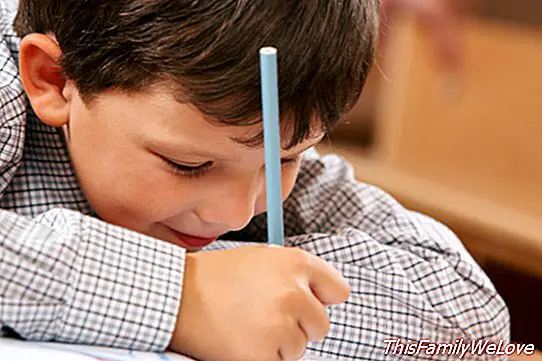Dysgraphia and its consequences for learning
When you talk about learn to read and write, a disorder is the best known: dyslexia. However, there is also another similar one that has to do with writing: the dysgraphia, a disorder that has consequences for learning and that consists of certain coordination difficulties between the muscles of the hand and the arm.
Dysgraphia prevents children from mastering and directing the writing instrument, that is, the pencil, ballpoint pen, wax, and so on. This makes the little can not write legibly and orderly. In essence, this disorder can be defined as: a specific writing disorder that prevents writing correctly, as highlighted in a letter from the International University of Valencia.
Characteristics of dysgraphia
From this academic institution explains that the main characteristic of dysgraphia is that there is no neurological or intellectual disorder. "In the case of any problem of this kind, then it would be some kind of physical or intellectual disability, but it would not be considered dysgraphia", they add.
On the other hand, there are other characteristics of this disorder that are observable by the parents of children, are the following:
-It manifests itself through a series of symptoms that appear since the beginning of schooling and they are increasing as the initial schooling progresses.
-From the beginning of the school stage to children with dysgraphia They have a hard time writing and they do it more slowly than the average class.
-It is perceived in children a remarkable motor stiffness or, on the contrary, excessive laxity.
-The strokes they do not stay uniform, but they vary constantly.
-Different size in words and letters, even in the same paragraph.
-The movements to write are usually slow, tense and rigid.
-Difficulties for organize the letters within the word or phrase.
-Lack of control in the pencil pressure, ballpoint pen or other writing instrument.
Incorrect postures The child keeps the trunk very close to the table or leans too much.

Are all the dysgraphies the same?
No, there are two types of dysgraphia: the motor and the specific.
-Digital imaging: is a psychomotor disorder in which the child "understands the relationship between the sounds heard and the graphic representation of these sounds" but has difficulties in writing.
-Specific graphics. Experts point out that this kind of dysgraphia is shown with a bad perception of the forms and, sometimes, a spatial and temporal disorientation and disturbances of the rhythm. "The problems in the writing of these children are produced by an excess of rigidity or impulsivity, lack of skill, slowness or extreme meticulousness."
The consequences for learning
It is to imagine that, if the writing is (as the reading) a basic competence, not being able to carry it out correctly has consequences for learning: from the International University of Valencia they assure that dysgraphia generates a "significant decrease in the learning rhythm" of the child with respect to the class average.
In addition, the ability to communication with teachers and their ability to solve exercises and daily academic activities are often "severely impaired," since the child can not express himself adequately through writing.
Their difficulties to write have another consequence: "the child is fatigued much more than the rest of the class, since writing is a great effort for him ", something that, in turn,"it leads to lack of attention and impossibility of following the school rhythm ", they add.
All this, in turn, has an even more negative consequence on the child: the frustration for not being able to follow the requirements of the class, something that can lead to a growing disinterest and rejection of studies, they warn.
The treatment of dysgraphia
It is usually thought that for the child with dysgraphia overcome this disorder the best thing is that you practice writing a lot, but it is not like that. From this university they indicate that the best thing is for the child to gradually overcome the difficulties that prevent him from writing well. In this way, it is recommended thatn class activities are carried out entertaining and even playful "in order to recover global and manual coordination and correct body postures and movements of hands and fingers."
In spite of the important consequences of this disorder, from the university they assure that with an early detection and the suitable intervention of the educational personnel, as well as with the support of the families, Children with this problem usually overcome it progressively, getting to get a completely normal writing.
Angela R. Bonachera




